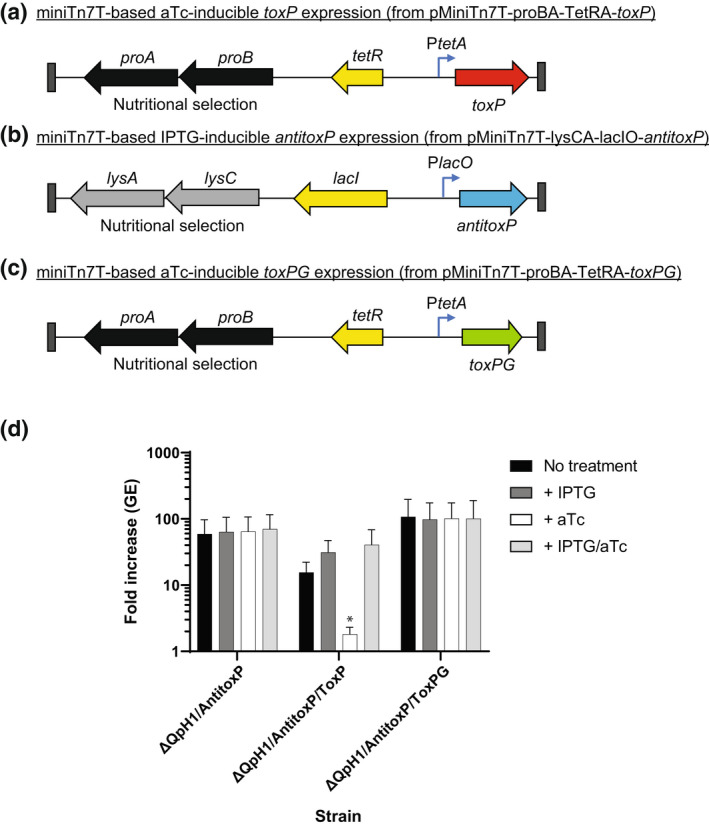FIGURE 8.

Expression of toxP in the absence of AntitoxP prevents Coxiella burnetii replication. Schematic of miniTn7T transposons designed to allow (a) aTc‐inducible expression of toxP (from pMiniTn7T‐proBA‐TetRA‐toxP) or (b) IPTG‐inducible expression of antitoxP (from pMiniTn7T‐proBA‐lacIO‐antitoxP) or (c) aTc‐inducible expression of the N‐terminally truncated version of toxP from G Q212 (toxPG) (from pMiniTn7T‐proBA‐TetRA‐toxPG). The ΔQpH1 mutant was first transformed with the pMiniTn7T‐lysCA‐lacIO‐antitoxP using the lysine‐based nutritional selection to integrate the IPTG‐inducible into the C. burnetii genome. The resulting strain ΔQpH1/AntitoxP was treated with IPTG to induce antitoxP expression and then transformed with miniTn7T transposons containing either aTc‐inducible toxP or toxPG expression using proline‐base nutritional selection to create ΔQpH1/AntitoxP/ToxP and ΔQpH1/AntitoxP/ToxPG, respectively. (d) Expression of toxP caused a severe growth defect in THP‐1 macrophages that could be alleviated by co‐expressing antitoxP. Replication is shown as a fold increase in C. burnetii genome equivalents (GE) of the ΔQpH1/AntitoxP strain with or without the ToxP or ToxPG miniTn7T transposons after a 5‐day infection of THP‐1 macrophages in the absence of any inducer (no treatment), presence of IPTG, presence of aTc, or presence of both IPTG and aTc. Results are expressed as the means of results from two biological replicates from three independent experiments. Error bars indicate the standard deviations from the means, and asterisks indicate a statistically significant difference (one‐way ANOVA, *p < .05) compared with values for the no‐treatment samples
